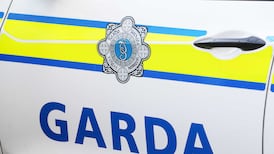Sites of major geological importance are to be given statutory protection for the first time, to prevent them from damage.
The sites are to be protected under the Wildlife (Amendment) Bill, 1999, which last week reached the committee stage in the Dail, a spokeswoman for the Department of Arts, Heritage, Gaeltacht and the Islands has confirmed.
"If you accept the need for nature conservation, it is necessary to have a component of geological heritage," according to Dr Matthew Parkes, of the Geological Survey of Ireland (GSI). "It is an element of the conservation of the natural heritage - just as it's important to preserve a wetland or woodland."
"There are so many developmental pressures at the moment, with roads, housing and agriculture, which are putting the sites at risk," Dr Parkes noted. "It's a way of flagging them as important sites to be protected against obliteration, either deliberately or inadvertently.
"Often owners do not know the sites are important."
In the Irish Geological Heritage programme, a partnership between the GSI and the National Parks and Wildlife Section of Duchas, the most important geological sites are being selected for preservation by a panel of specialists. Sites will be picked as the best representations of geological features, unique examples of certain features and sites of international importance. They will be designated Natural Heritage Areas (NHAs).
A critical aspect of the programme is the involvement of landowners and local communities.. It is hoped the programme will explain the importance of sites and, where appropriate, help develop them for tourism, Dr Parkes said.
The State is lagging behind other European countries in the designation of geological sites, said Dr Liam Lysaght, ecologist with the Heritage Council. Such areas have definite potential for tourism, he added.
The sites may also be in danger of being plundered, he warned. At Hook Head in Co Wexford people used crowbars to prise off pieces of rock containing well-preserved fossils. Similar samples have been removed from a section of coastline in Co Sligo.
"There is a market for fossils and they are worth quite a bit. If they go into a private collection, they are lost to science and to the public," Dr Parkes said.
It was also important for scientific research to protect the specimens in their original fossilised context. If sections of the sites were removed to museums, "the local community could feel robbed of their geological heritage", he said.
One site which has been recommended for a "fast-track" approach is a 385-million-year-old trackway of fossilised footprints of an early amphibian, a tetrapod, which is found on Valentia Island, Co Kerry. At present it has no legal protection.







